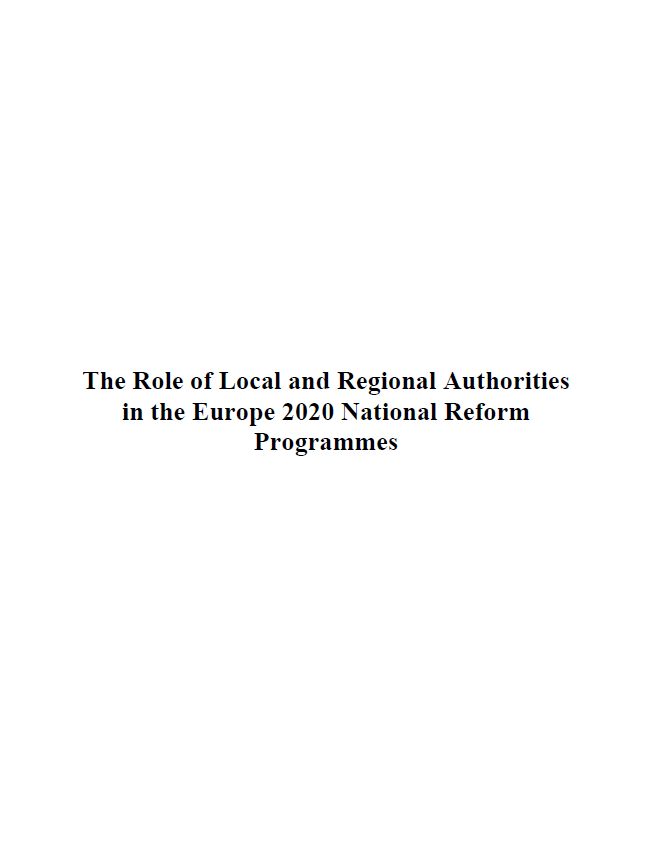The Role of Local and Regional Authorities in the Europe 2020 National Reform Programmes
Analysis of 2011 National Reform Programmes
- Publication
- Citation
Srebotnjak, Tanja; Annemarie van der Westhuysen and Markus Hametner 2011: The Role of Local and Regional Authorities in the Europe 2020 National Reform Programmes.
The Europe 2020 Strategy sets the goal for the European Union to become a smart, sustainable and inclusive community by 2020. The 27 EU Member States must provide the European Commission with National Reform Programmes (NRPs) demonstrating how they are implementing the Europe 2020 goals and targets. This study is a review of all 27 NRPs regarding the role of local and regional authorities (LRA). The study is available for download.
The main objectives of this study are:
- Analyse whether and to what extent local and regional authorities (and their representatives) were involved in the drawing up the NRPs. Were the LRAs involved? If so, were they consulted, or have they had a say in the decisions taken? Will this involvement continue to take place in the implementation phase of the NRPs?
- Examine whether the NRPs have fulfilled the request made last year by the European Commission stipulating that their NRPs “should indicate how the national authorities plan to involve/have involved local and regional authorities and relevant stakeholders in defining and implementing the NRPs and how they communicate/plan to communicate an Europe 2020 and on their own NRP, and what the results have been. They will also be invited to report on their experiences with collecting, sharing and implementing good practices”.
To meet these objectives, the present study examined all 27 NRPs on a set of 12 questions and a cumulative score.
These results indicate that the majority of countries submitted NRPs that fulfil many but not all of the aspects that would achieve a vertically integrated Europe 2020 Strategy with solid links and collaboration across different levels of government. There are also substantial differences between the countries with the most comprehensive NRPs and those with the least informative programmes in terms of the LRAs' role in drafting, implementing, coordinating and monitoring the NRP actions.
On the other hand, nearly all NRPs state that LRAs were in some form or another involved during the initial drafting stage and LRAs are mentioned frequently as having implemented the actions outlined in the NRP. The level of influence and/or control that LRAs have in this process appears to be more heterogeneous. In some cases, LRAs are given merely consultative roles while, in the cases of the highest scoring countries, LRAs contribute to decision-making throughout the entire process in at an institutional level.




